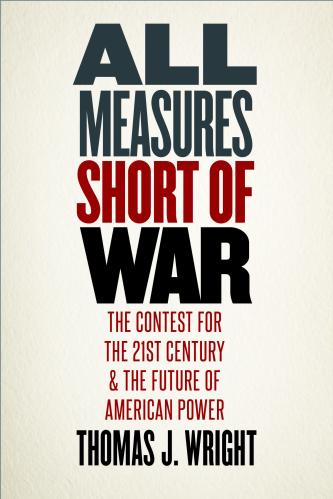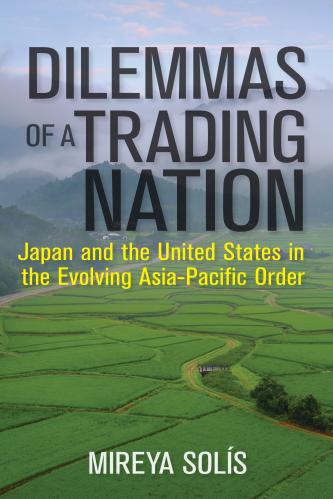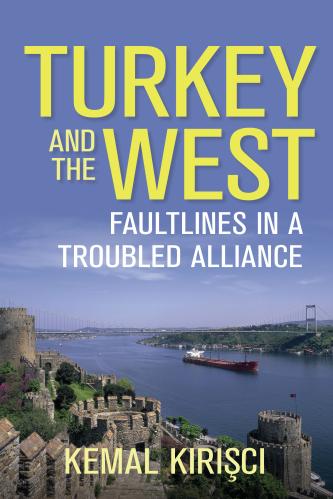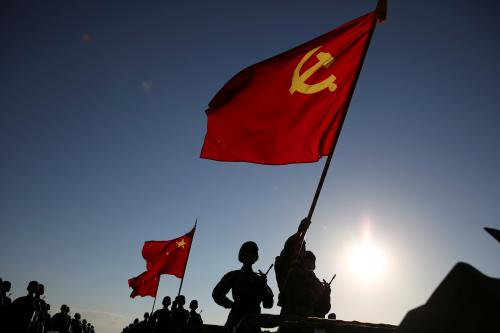This is the first in a series of posts by Brookings’s vice president for foreign policy that will highlight Brookings scholars’ new and ongoing work on “the new geopolitics.” More information on this scholarship can be found here.
America’s politics are mired in dysfunction and division. Much of the focus is on economic questions, and much of the heat is generated by the culture wars; but real wars—and America’s role in them—are part of the debate too.
While this debate preoccupies America, the world is changing, and rapidly. We have entered a new phase in international affairs, leaving behind us the brief moment characterized by untrammeled American dominance. Many of the changes underway are beyond America’s control. However, some dynamics could still be shaped by concerted and disciplined American policy—and might. Whether we are capable of that in the current moment remains to be seen, as does the price Americans are willing to pay to do so. To paraphrase Senator Daniel Patrick Moynihan, America is entitled to decide what role we want to play in the world, but we are not entitled to pretend the world is not changing around us.
We have entered a new phase in international affairs, leaving behind us the brief moment characterized by untrammeled American dominance.
The idioms of “international order,” “American leadership,” and “America First” dominate—but often obfuscate—the debate. More charged labels such as “nationalist” and “globalist,” often just as devoid of precision, are the accompanying epithets. Peel these away, and the new geopolitics has a number of distinctive features, some illuminated by history, some potentially unique to our moment of political and technological flux.
This new phase has been variously described as a new Cold War between two major powers, or a “G-Zero,” i.e. a world of every country for themselves. By my reckoning, it is neither, though it has elements of both. In the realm of economic affairs, we are in something that resembles multi-polarity, although some of the major economic actors (like Japan) don’t really act as poles of the economic order, as that term is conventionally used. Seen through the lens of the weaponization of cyber and artificial intelligence, we’re approaching a new Cold War between Russia and the West. Both of these features are part of a wider emergence of a new geopolitics, a new “great game” of competition between major powers that is rife with risk of confrontation and deadly miscalculation, but also hardly free of opportunity for countries and private actors nimble enough to adapt.
The dynamics of economic multi-polarity obscure the central reality of what I think is best described as asymmetric bipolarity: the fact that the United States and China are the central factor in every other actor’s calculation, albeit unevenly. There’s still a huge disparity between those two actors of course, but China profits from “the shadow of the future” and from America’s present dysfunction and decisions, and is thus more equal in states’ long-term calculations.
We are operating in a changing system that has an asymmetric bipolarity at its core, and a fluid, economic multipolarity orbiting around it. It has the following additional features.
First, we are in an undeclared arms race between the United States and China. The primary venue of that arms race is naval power: our effort to maintain naval primacy in Asia, China’s race to upend us using both conventional and asymmetric weaponry. The application of cyber and artificial intelligence tools to the relationship complicates matters; we’re applying 19th century statecraft in a world of 21st century weapons. This arms race is still of a modest scale by Cold War standards and is kept in check by comity between the top leaders, economic ties, and cooperation on global issues. But it is still an arms race. And it is triggering a core debate in the United States as to whether to unilaterally disarm in the regional military struggle, in order to avoid a risk of conflict with China; or whether to push back harder on China’s militarization, in order to prevent what otherwise seems likely, namely a conflict between the major Asian powers.
That debate hinges a second feature of the new geopolitical competition, namely an active re-evaluation by the world’s major economies of their security relationships with the United States. Several major countries are debating whether they can rely on the United States to maintain inter-state security in their region (to balance China’s rise in Asia; to contain Iran in the Middle East; to curtail Russian aggression in Europe), at which point those powers seek continued or deeper alignment with Washington. This could prove ephemeral. But if they decide that the United States is not reliable, those powers will seek self-help (read: nuclear weapons) or warmer ties to Beijing. Russia looms larger in this picture than the notion of bipolarity suggests, because of the scale of its weapons sales; but Moscow operates as assertively as it does only in so far as it can sustain diplomatic cover from China. Tom Wright’s recent account of competition entailing “all measures short of war” captures the tensions and risks that accompany this re-assessment.
This is in turn occasioning or amplifying a struggle over political and economic alignment in countries as disparate as Germany and Saudi Arabia. Because of the scale of global economic growth over the past three decades, there are now simply a lot more countries whose internal direction and external relations impact key regional and global dynamics. Germany’s evolving posture in Europe is part of the story, as is Britain’s attempt to rebalance national control and regional integration. Saudi Arabia’s attempt to shake up the regional balance of power is also part of the picture, as is Iran’s and Turkey’s evolving search for partners and patrons. In Asia, enduring distrust between Japan and the Republic of Korea shape and constrain their responses to China’s growing assertiveness and influence—to say nothing of the prospects for a military confrontation between the United States and North Korea. Brazil’s extended turmoil and Argentina’s emergent but fragile stability seem more remote from great power muscle movements, but will fundamentally shape the prospects for peace and economic development in the Western hemisphere. The European project’s struggle with far-right populism, Poland’s retreat from liberalism, Israel’s courtship of Russia—all of this also forms part of the field of play.
This is accompanied by rapidly evolving patterns of economic interaction: whether in the Canada-EU trade agreement, Japan’s new willingness to exert regional leadership on free trade in Asia, or the expansion of Sino-German economic ties; this too is part of the reality. It is too simplistic to argue that deepening economic integration renders this competition benign. Economic integration raises the domestic stakes in great power relations, sometimes in stabilizing ways, but also sometimes in distorting ones, particularly with the ascendance of economic nationalism. Modern history offers a cautionary tale: After the wars of the late 1800s, the economically integrated countries of Germany and the United Kingdom moved deliberately to shift away from integration to re-nationalization of production, with momentous consequence.
The tools of renewed geopolitical competition differ depending on the type of state in play. Advanced economies are playing an insidious game of “confront and conceal,” with cyber intrusions, discreet or disguised financial influence, and disinformation to influence or disrupt an opponent’s internal politics. In less advanced economies, large-scale infrastructure spending combined with political pressure and corruption has emerged as the technique of choice by the great powers, while counter-corruption campaigns are the vehicle for domestic purges. In politically unstable environments such as Syria and Yemen, we’ve witnessed the re-emergence of old-fashioned proxy warfare—that is, the flow of money, weapons, intelligence, and political support to national or sub-national or even trans-national military units fighting for control of politics or territory in an active conflict, with potentially devastating human cost.
As every major country (and for that matter, every major global financial and energy firm) feels its way through the shifting contours of the core—U.S.-China relations—the new geopolitical competition plays out most acutely around three essential questions: How hard will China push in Asia, and how hard will America push back? How much instability will Russia seek to spread in Europe, or in conflict spots in other regions, and will the United States work with Europe to contain its efforts (or can Europe do so alone)? And how much instability or presumptive stability will the United States inject into an already turbulent Middle East, and what other powers will profit from the re-alignment of inter-state relations there?
In this fluid environment, analysis of the new geopolitics—and America’s role in it—must address four sets of questions.
- What are the attitudes, aptitudes, and capabilities of the other players in this evolving game—i.e. we need greater specificity about the contours and direction of both regional and global competition and cooperation, economic and strategic. What, exactly, are we up against? And where are the opportunities, and the greatest risks? For the past several years, Brookings scholars have been undertaking this study, and now major accounts of the dynamics of some of the key players are shedding light on their evolving strategies. Must-reads in this include Fiona Hill and Cliff Gaddy’s magisterial account of Vladimir Putin; Cheng Li’s account of the new politics of Xi Jinping’s China; Bruce Riedel’s narrative about the relationship between kings and presidents that has shaped the U.S.-Saudi relationship since the 1940s and shapes it still; Kemal Kirişci’s lament for Turkey’s drift from the West as part of a long-troubled alliance; the account by Harold Trinkunas and David Mares of Brazil’s search for a global role; and Shivshanker Menon’s insider account of the choices India confronts in managing its own rise in a contested region. Major studies soon to be released on Iran, Germany, Israel, and India-China relations will add to our understanding of landscape of changing geopolitical ties.
- How do we talk about America’s role in this shifting game? The terms and terminology of engagement are muddled—we need a new vocabulary that illuminates rather than one that obfuscates. Constructing new, more precise, and more persuasive terms is very much a work in progress. I believe we would profit from less time spent debating “order” and more time talking about the central objectives we’re trying to achieve: avoiding a major power war in Asia; protecting European security and democracy from Russia; maintaining an open economic system. (It eludes me what American policymakers think they are trying to achieve in the Middle East.) Against the backdrop of those specific objectives, we can debate how much of the burden the United States should carry, and what can be shared. Ted Piccone’s account of the liberal and anti-liberal debates among five rising democratic (or semi-democratic) powers illuminates what’s at stake if we enter a phase of geopolitics that rewards closed over open systems.
- What role does the United States intend to play in shaping globalization from here on out, and what role does China intend to play? And what is the nature of that economy? In our political debate, we use the term “free trade” as if we still operated in a 1970s economy where goods produced in one country are traded to another; the reality is global supply and value chains that repeatedly crisscross national borders. Will we try, like King Canute, to hold back the tides of global economic production, or will we learn to swim in newly contested waters? Mireya Solís’ account of Japan’s dilemmas as a trading nation confronting the new realities of globalization sheds light not only on this central ally’s response to the new geopolitics, but some of the dilemmas the United States also faces as a country now far more deeply integrated in global supply chain economics.
- And what is the future of the international security architecture, through which most strategies and most operations are at least partially implemented—and which needs to be recast for contemporary threats and contemporary geopolitics? President Trump is not wrong to critique the existing system for burden-sharing, though he has yet to provide a compelling alternative vision. How and with whom we work on international security is a more open question than current debates about NATO or our role in the Middle East and Asia acknowledge. Michael O’Hanlon’s challenge to rethink NATO’s role in Eastern Europe has provoked much debate within the halls of Brookings; and while I don’t agree precisely with his prescription, I share his concern that NATO and our overall security architecture is out of alignment both with the changing balance of power and with the new threats we must confront. A new Brookings project on burden-sharing past, present, and future will add to this debate.
These questions about the new geopolitics must inform a new debate about America’s role—and interests—in a much more competitive world. What choices we as a nation now make will reverberate through this new geopolitical landscape, leading us either to a situation of tense stability or to a more dramatic, and probably violent, re-ordering of international relations.
The Brookings Institution is committed to quality, independence, and impact.
We are supported by a diverse array of funders. In line with our values and policies, each Brookings publication represents the sole views of its author(s).











Commentary
The new geopolitics
November 28, 2017